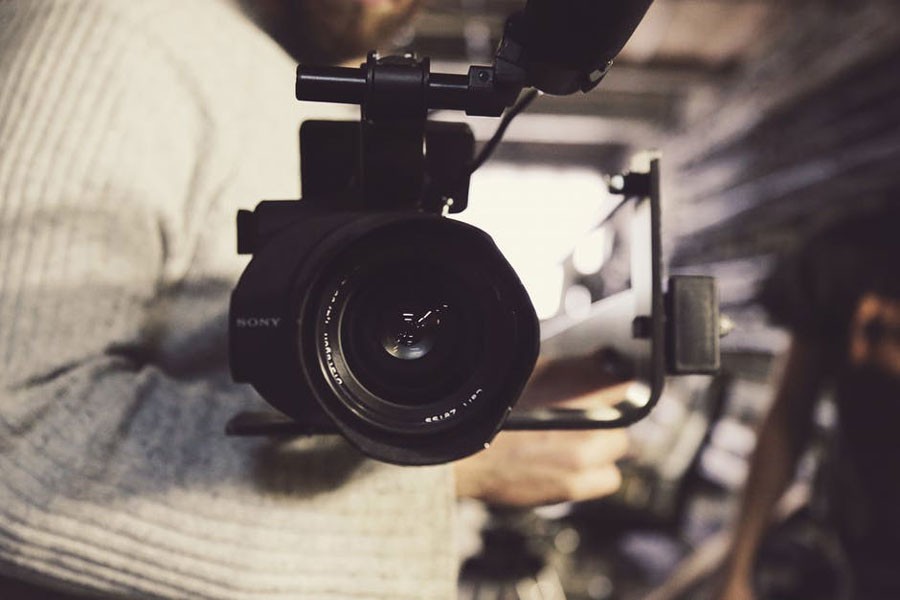There are few film buffs not taking interest in watching film shootings --- be they indoors or held on an outdoor location. In the heyday of Bangladesh cinema in the 1960s and '70s, street-based outdoor shooting in Dhaka was a common spectacle. The shooting units had to employ volunteers to keep the curious spectators out of the camera range. If a popular film star happened to be a part of the scene being shot, the crowd would on occasions turn unwieldy prompting the production team to call police. But law enforcers would also fail at times to keep the frenzied fans under control.
Shooting the scenes of a village room and a rural house's courtyard on the floors of Bangladesh FDC studios used to be avoided by naturalist film makers. But at times they had little options. They were compelled to do the job by making artificial village spots on the studios' floors. The committed and uncompromising directors, however, would be seen making arduous travels to the city's suburban villages.
Shootings have increased manifold over the last few decades. With the cinema fallen on bad times, the shooting of pure films has declined drastically. These days, the TV plays, drama serials, 'telefilms' and occasional attempts by off-beat short and full-length film makers now dominate the scene. A handful of entrepreneurial villages welcoming shooting units have lately emerged around the capital. These villages remain busy round the year arranging different types of day-to-day objects needed in rural sets, both indoor and outdoor. Of them Bhadun, a scenic village under the Pubail union, not far from Dhaka, stands out with its ready-to-use shooting spots. Except the recent 7-month corona pandemic-prompted shutdown, the village has been catering to the needs of TV play makers and movie directors for over two decades.
Given the round-the-year bustle of professionals from the movie and television industries, the Bhadun village has long been known as a 'shooting geram' or 'shooting village'. A small section of its people is engaged in traditional occupations like farming. But the village's economy is now mostly basedon renting small and big tin-shed or half-brick houses, well-cared-for rural gardens, bamboo groves, house front-yards and back-yards and dirt roads ('methopoths'). All kindsof objects used in a village life, necessary for shooting an authentic rural scene, are available in the village. The villagers are happy with the small amounts of rents they receive from the shooting units for the use of their space and props. In fact the whole village has developed a deep bond with the actors and the shooting crew coming from the capital. Their stay in the village depends on the demand of particular sequences of a drama or a movie. It matters little to the villagers whether the stay of the 'different' guests from Dhaka is short or long.
A great benefit being derived from shooting work in the village is everything is found ready-to-use here. Manual labour is cheap and always available. Highly uncommon sets like a rural kitchen with a befitting earthen stove and cheap utensils do not seem a rarity here. If there is a character playing the role of a well-off farmer, the director doesn't have to worry. Different sizes of cowsheds are there with the original farmer remaining standby to help the artiste.
To speak in brief, the major segment of the village's economy is increasingly getting dependent on shooting activities. The scenario is, indeed, unique. In developed countries, there are special corners for theseshootings in their massive studios. In Bangladesh an entire village has been dedicated for shooting films, plays. And the village has discovered its unique way of prospering. It could be the tale of an innovative self-reliance.


